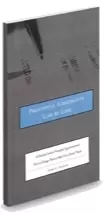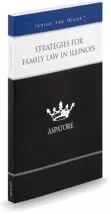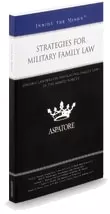Considering that the facts of every circumstance is different, it is important to consult with an attorney regarding any particular circumstance. However, this summary does help provide some important information on the admission of digital evidence.
a. Applicability of Federal Rules of Evidence to ESI
Issues and laws regarding family law are generally state-specific. Still, the Federal Rules of Evidence are often mirrored or closely mirrored when states enact such statutes. In that vein, we will look to the Federal Rules of Evidence in determining which objections to the entry of ESI into evidence that you should expect.
Your first hurdle will be to pass any objections to relevance. Under Fed. R. Evid. 401, evidence is relevant if it has any tendency to make a fact more or less probable than it would be without the evidence; and the fact is of consequence in determining the action.
Next, is Fed. R. Evid. 901 regarding authenticity, as a party or counsel may object to ESI on the grounds that the material is not authentic. Under Fed. R. Evid. 904(b)(1),witness testimony can authenticate ESI if that witness has knowledge that the evidence is what it is claimed to be. The ability to use this rule in authenticating evidence underlines why it is important to seek out information relative to potential witnesses to behavior relative to social media and other user habits.
This was true in United States v. Lanzon, 639 F.3d 1293 (11th Cir. 2011), where a transcript of a conversation between a man and an undercover agent that the man believed to be a child was admitted at trial. The messages were copied from an instant messaging service and copied onto a word document, leading to the argument that they could not be authenticated because they were altered when copied. The Court used Fed. R. Evid. 901(b)(1) in reasoning that a “proponent need only present enough evidence to make out a prima facie case that the proffered evidence is what it purports to be.”
However, the court in People v. Lenihan found that admission of downloaded photos form a witness’ Myspace page was improper because of the ability of the witness to edit the photographs and because the defendant was unable to determine who took the photographs. People v. Lenihan, 911 N.Y.S.2d 588 (N.Y. Sup. Ct. 2010).
Still, in People v. Clevenstine, the Court allowed evidence of Myspace page printouts when the state also presented evidence from a computer forensic analyst and a legal compliance officer from Myspace. People v. Clevenstine, 68 A.D.3d 1448 (N.Y. App. Div. 2009). The Myspace officer was able to testify in regard to access and use of the profile as well as concerns about whether or not the content originated with Myspace. The Court reasoned that Fed. R. Evid. 104(b) allowed the “trier of fact could weigh the reliability of the Myspace evidence against the possibility that an imposter generated the material in question.”
With regard to email, United States v. Siddiqui, 235 F. 3d 1318, 1322-23 (11th Cir. 200) provides relevant opinion. In this case, the Court reasoned that authentication of e-mail could be found by circumstantial evidence, such as the presence of defendant’s work e-mail address and use of his nickname.
In addition to those rules above, Fed. R. Evid. (904)(b)(4) allows parties to authenticate ESI using circumstantial evidence along with other evidence of distinctive characteristics of that evidence (appearance, content, etc.).
You will also want to be mindful of hearsay objections and relevant exceptions. The most relevant that you will likely use will be that of the business records exception. Under this exception, documents will be allowed under Fed. R. Evid. 803(6) as long as the following is true: the document must have been prepared in the normal course of business; it must have been made at or near the time of the event it records; and it must be based on the personal knowledge of the entrant or of an informant who had a business duty to transmit the information. Under Lorraine v. Markel American Insurance Co., 241 F.R.D. 534 (D.Md. May 4, 2007), for a document to have been made in the normal course of business, the record must have been made in the course of a regularly conducted business activity for which it was the regular practice of the business to maintain a memorandum.
The best method overall, however, will be to simply get admissions from opposing party regarding the content. This can be accomplished through requests for admissions, through depositions, and through interrogatories. Further, if the information is provided to you by opposing party, it will be deemed to be authentic. If these methods are not available, however, using the above rules to authenticate the evidence along with expert testimony, if needed, will assist you in getting your evidence admitted at trial.
b. Cross Examination
Though generally improper to attempt to admit evidence during cross examination, using cross to prove that a particular piece of ESI is authentic can be valuable. This is especially true if you have taken the time to depose the party in question, and can quickly get to both credibility and authentication while the party is on the stand. While cross examining your witness, remember that a slow and steady approach, using only closed-ended, leading questions can work wonders. Get your opponent or witness to make small admissions at first. Slowly build upon those admissions until you have the information from that witness necessary to question them about their electronic practices. Once this has finished, use a steady approach to get to their actions relative to that particular ESI. Then, ask the witness about the specific ESI at hand. At this point, you should have the relevant admissions to either get them to admit to the issues relative to the ESI, or make some level of fabrication that will serve to destroy their credibility.
c. Effective Use of a Deposition
There are several keys to good depositions. First and foremost, be prepared. Know your opposing party as much as possible before you meet them in the deposition room. Depending on your particular style, have either a comprehensive outline of your anticipated questions or topics ready so that you do not miss important subjects while in the deposition room. When in the room, one approach to conducting a deposition where information flows freely is to go into the deposition with a welcoming, open, and conversational attitude. Start first with the easy questions. Then, as subjects relative to ESI are discussed, nail down the particulars of that person’s story. Then, when the particulars have been parsed out and discussed, discuss the relevant ESI. By getting as much information as possible on the record relative to the ESI prior to actually talking about ESI, you set yourself up for either more admissions or a greater ability to attack the credibility of that party.
Then, when the deposition is complete, remember to study and tab your deposition copies. If the deposition revealed that there might be information that you need, use that information to propound further interrogatories and production of documents. You should also use the opportunity of the deposition to glean from the party other witnesses that may be necessary for your case. Part of the effective use of the deposition is not just conducting the deposition itself, but instead using the information
gained to your advantage both in acquiring further discovery and in impeaching that witness at trial.
c. Requests for Admissions on Denial/Authenticity
Requests for Admission are governed by Fed. R. Civ. Pro.36 and are similar to requests for interrogatories. Specifically, they seek to require one party to admit or deny the statements or allegations in the request. When propounding these requests, put the admissions in statement form. After each statement, the party should admit, deny, or give a detailed explanation as to why that request cannot be answered. Fed. R. Civ. Pro.36(a)(1) specifically states that the types of requests shall be limited to facts, the application of law to fact, or opinions on the above; and to the genuineness of any described documents. The last portion of Fed. R. Civ. Pro.36 is especially relevant when considering ESI already in possession of you or your client, as the requests can directly seek to admit or deny the authenticity of that ESI.
One particular strategy can be to request admissions relative to ESI practices. Still, your client may be best served by using interrogatories to inquire about ESI practices and relevant information in order to allow for well-rounded, detailed answers not attainable by giving a simple “admit” or “deny”. Once you actually have the information relative to ESI, you can request or subpoena that ESI. Once the ESI is in your possession, then propound the requests for admission for use in authenticating the data.
d. Comparison by Trial/Expert Witness, Distinctive Characteristics
The use of trial vs. expert witnesses will vary based on your need and/or use for the ESI sought to be entered into evidence. Trial or lay witnesses can attest to their personal experience with a party and ESI practices, as well as to identifying information contained in the ESI as it relates to a party. They can attest to language used, pet names or nicknames, timelines, and even to usernames. These witnesses can help in admitting evidence by using their personal knowledge and experience with a party to authenticate the source of the ESI.
Expert witnesses, on the other hand, are enlisted to help the trier of fact to understand the evidence or to determine a fact in issue under Fed. R. Evid. 702. Opinions will be based on experience, training, and use of reliable methods to come to his or her conclusion. Experts will not be used attest to personal experience with a party, but can, and should, be used if they have assisted in acquiring ESI from devices and other sources. They can attest to the chain of custody, method of retrieving the data, and to authenticity as to how ESI was stored on a device, timelines, browser histories, and how the device was accessed and/or mirrored/copied. In short, the main distinguishing characteristics will be personal knowledge vs. professional opinion based on handling the ESI or device containing ESI, methods used, and experience in identifying key features.
e. Best “Forms” in Which Different ESI Should Be Admitted
Admission of the ESI will depend on how the information was acquired. Naturally, you will need to follow the general rules of evidence in showing relevance and authenticity, and then any exceptions to exclusionary rules, if necessary. If the information was acquired by a party or other witness and simply printed or reproduced, you will need the witness to attest to certain identifying aspects of the ESI. This can include manner of speak, knowledge of username, particular fonts used, time of communication, and other key identifying information.
If your ESI comes from an entity such as Google, Facebook, or some variation thereof, you will either need a business records affidavit or a representative to testify as to the authenticity of the document.
If your knowledge of ESI comes through interrogatories, admissions, or through deposition, you may seek to admit as such. Conversely, if the discovery was obtained by an expert or forensic specialist accessing a particular device, you will use that expert testimony to introduce the information.
In using the ESI or device at trial, you may provide copies of communication and/or photographs, but be prepared to combat the best evidence rule if there is no business records affidavit available for non-photographic information. In this vein, a Hawaiian Court deemed text messages as falling under the rule. In State v. Espiritu, the court held that “a text message is a writing because it consists of letters, words, or numbers set down by mechanical or electronic recording, or other form of data compilation.” State v. Espiritu, 176 P.3d 885 (Haw. 2008),
In using photographs, you may have a witness testify as to the identifying information, the fair and accurate depiction thereof, and any additions or deletions from the photo. The witness does not have to be the person who took the photo. In using videos or voice recordings, you will first need to determine whether or not the recording is in violation of any applicable Wiretapping statutes. If, however, your witness or client was a party to the conversation or action being recorded, the Court will be far more likely to allow the evidence, even if the other party did not know of the recording. If, for example, your client recorded her husband admitting to an affair, you will need to authenticate the recording by confirming that she was the recorder, that the recording is a fair and accurate depiction of the conversation, and that no alterations have been made to the recording.
C. Useful Strategies for Contesting the Veracity of the Information
Many strategies for contesting the authenticity of the ESI are available and will depend on the ESI sought to be introduced at trial. Prejudice and relevancy objections can be used if the ESI holds no bearing to the proceedings or is simply being used for inflammatory purposes. Further, be sure to pay close attention to the testimony being elicited from the witness prior to request for admission so that foundation questions may be lodged against the opposing party.
If the ESI sought to be introduced is in the form of documents which have not been authenticated by a custodian of records or through an affidavit, you may seek to prevent them from being introduced under the best evidence rule or through inability of the party to authenticate its source. If the documents are admitted nonetheless, be prepared with cross examination questions that will attack the credibility of the witness, chain of custody, and/or ability of the documents to be altered.
D. Challenging the Process of Obtaining the Information
Challenges to the process of obtaining the information will vary and will greatly depend on the request. General requests/subpoenas can be challenged based on the overbroad nature in which information is sought. Objections to these subpoenas should emphasize the overbroad and/or vague nature of the requests as related to the over burdensome requirements in complying with the request in terms of time and money spent on doing so.
Next, you can challenge relevancy, but expect that during the discovery process that the Courts will generally apply a liberal approach to discovery requests if the request is reasonably likely to lead to relevant evidence in the case.
When it comes to requests to search devices, challenges based on use of the device can serve your client well. If the device was used solely by one party, especially if password protected, the rival party will be less likely to be granted access. Remember that if the device has been used by the family, that it will be more likely to be deemed marital property to which opposing party should have access. Then, if the requested information that could be found on the device has already been provided, objecting based on that production and based on the request being used as a “fishing expedition” can prevent the device from being searched.
To read more on social media evidence in divorce, you can read other articles on our webpage, including:
- How does your online social media presence affect your divorce?
- Non-traditional sources of electronic evidence.
- Electronic evidence in divorce and family law.
Keywords: Social Media Evidence, Digital Evidence, Divorce, Family Law





